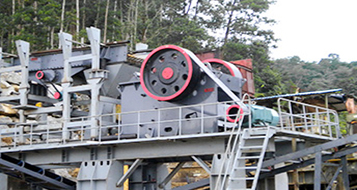The eccentricity of a primary Rock Jaw Crusher (typically a single-toggle or double-toggle jaw crusher) refers to the offset distance between the center of the eccentric shaft and the center of the crusher’s main frame. This eccentric motion drives the movable jaw, creating the crushing action.
 Key Points About Eccentricity in Jaw Crushers:
Key Points About Eccentricity in Jaw Crushers:
1. Purpose:
– The eccentricity determines the stroke (vertical movement) of the swing jaw, which affects crushing efficiency and capacity.
– A larger eccentricity increases stroke but may reduce speed, while a smaller eccentricity allows faster cycling with less stroke.
2. Typical Eccentricity Values:
– For primary jaw crushers, eccentricity usually ranges between 5 mm to 30 mm (0.2″ to 1.2″), depending on crusher size and design.
– Larger crushers (e.g., 60″ x 48″) may have higher eccentricity for greater crushing force.
3. Effect on Performance:
– Higher eccentricity → More aggressive crushing but higher wear on jaws.
– Lower eccentricity → Smoother operation but reduced throughput.
4. Single-Toggle vs. Double-Toggle:
– Single-toggle crushers rely heavily on eccentricity for jaw movement.
– Double-toggle crushers use a pitman arm mechanism, reducing direct reliance on high eccentricity.
5. Adjustability:
– Some modern jaw crushers allow adjustment of eccentric throw (via hydraulic or mechanical systems) to optimize performance for different materials.
.jpg) Factors Influencing Eccentricity Selection:
Factors Influencing Eccentricity Selection:
– Feed size & hardness of rock
– Desired product size (CSS—Closed Side Setting)
– Crusher capacity requirements
Would you like details on a specific jaw crusher model or application?




